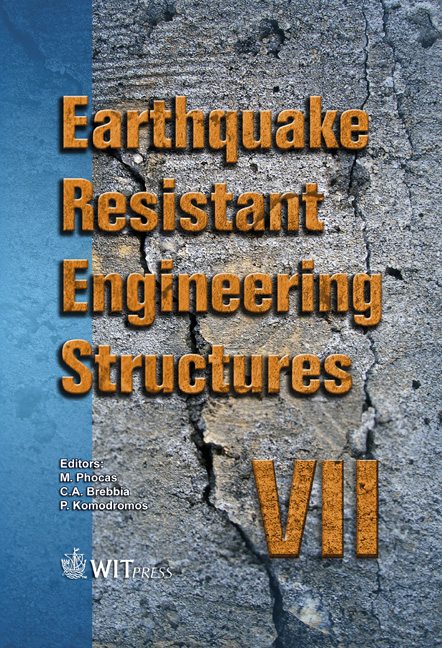Experimental Investigation On The Seismic Damage Behaviour Of Reinforced Concrete Columns And Beams
Price
Free (open access)
Transaction
Volume
104
Pages
12
Page Range
433 - 444
Published
2009
Size
1,011 kb
Paper DOI
10.2495/ERES090391
Copyright
WIT Press
Author(s)
L. Chen, X. Lu, H. Jiang & J. Zheng
Abstract
The enormous loss of lives and property during the recent, strong earthquake in Sichuan, China reminds the public again of the extreme importance of seismic performance of engineering structures. As generally accepted as a promising direction, the performance-based seismic design (PBSD) method requires deeper insight into structural damage behaviours during strong earthquakes. The research in this paper was aimed at assessing the seismic performance of reinforced concrete columns and beams with varying design parameters. The main variables of the tested specimens included axial load ratio, shear-span ratio, lateral reinforcement ratio and longitudinal reinforcement ratio. It was found that the progression of damage was generally similar, and the flexural behaviour was dominant in all specimens with only one exception, which was designed according to early non-seismic design code. The influence of design parameters on ductility and damage behaviour are investigated, and it turns out that the axial load ratio and shear-span ratio affect ductility and cracking progress remarkably. The longitudinal reinforcement ratio has only a limited effect on the ductility of columns, but evidently affects the ductility of beams. The lateral reinforcement ratio seems to be a less important factor affecting column cracking behaviour, and it has drift-related effect on the cracking of beams. It is expected that these relationships can be utilized for the purpose of direct damage control in seismic design processes. Keywords: seismic design, damage states; performance, reinforced concrete columns.
Keywords
seismic design, damage states; performance, reinforced concrete columns.





